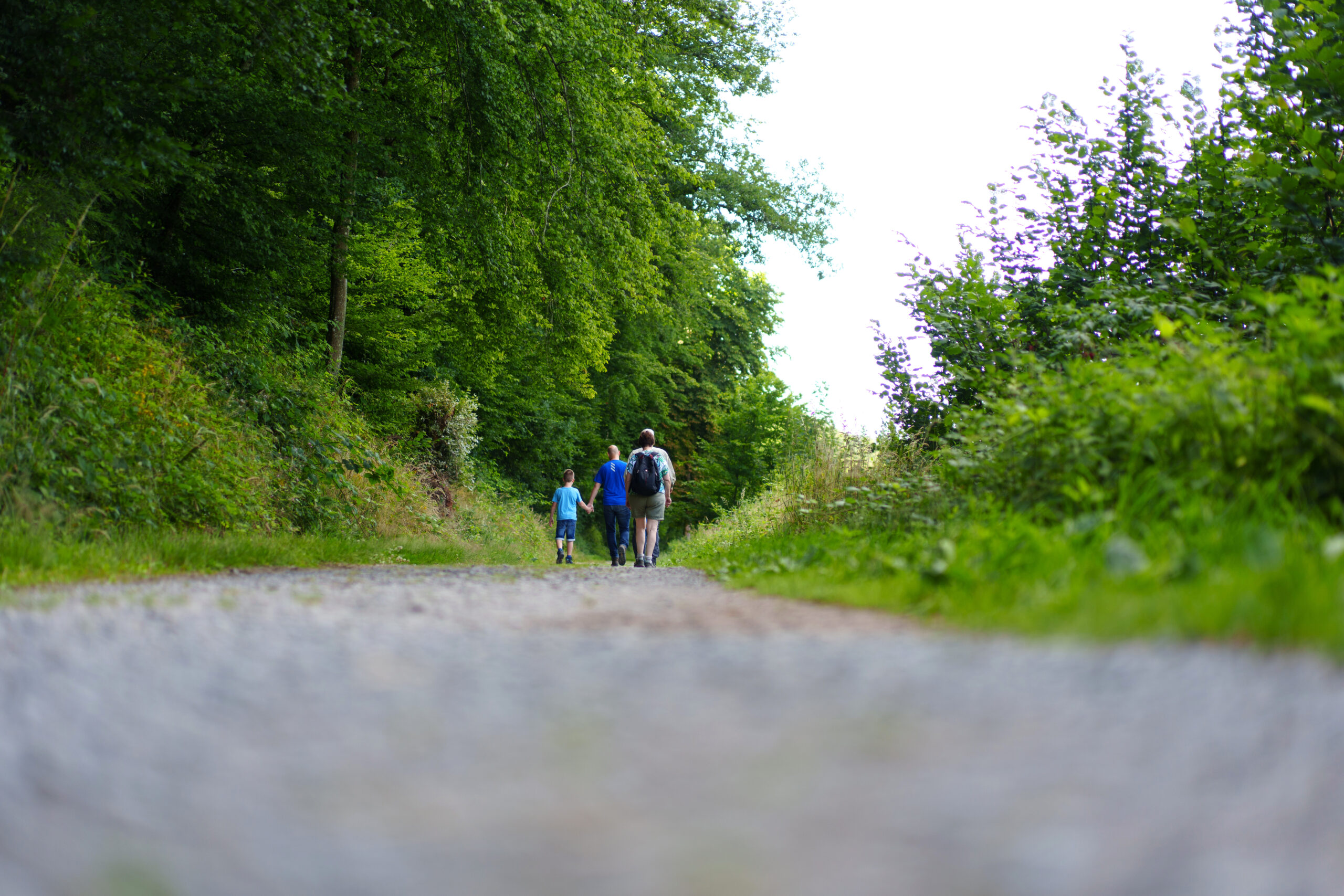Ardenne in Slow Travel Mode: Discover the region at a leisurely pace
Looking for a different kind of Ardennes getaway? Moments when every detail counts and every encounter is an enrichment? How could Slow Travel transform the way you travel?
Discover in this article how Slow Travel can transform your travels, offering unforgettable moments of cultural and ecological immersion.
What is Slow Travel?
Inspired by Slow Food: A New Horizon for Travel
The Slow Travel concept is closely inspired by the Slow Food movement. The latter was born as a reaction to the fast-foodization of society, and values local, quality food produced ethically and sustainably.
In the same way, Slow Travel invites us to enjoy each destination as we would a slow-cooked dish, with an emphasis on authenticity, quality and respect for the environment. This culinary inspiration translates into an approach to travel that favors deeper, more enriching experiences, centered on the genuine discovery of cultures and landscapes.

A Road Less Traveled
Slow Travel encourages us to abandon fast, polluting means of transport in favour of gentler, more eco-friendly options, such as cycling or walking. This encourages a more intimate immersion in the destinations we visit.
This way of traveling offers an alternative to traditional tourist circuits. It offers the chance to discover hidden places and connect more meaningfully with local communities.
Immersing yourself in local life
Embracing the principles of Slow Food, Slow Travel suggests living in accommodations that reflect the daily lives of local people, such as renting houses or studios. This approach not only helps to minimize the traveler’s carbon footprint, but also paves the way for authentic relationships with the place and its inhabitants. It invites you to share in their customs, their gastronomy, and their daily lives.
À la Table des Locaux
When it comes to meals, Slow Travel recommends restaurants that feature local produce, and encourages you to get away from the tourist areas and discover the places that are popular with the locals.
Environmental Impact at the Heart of the Journey
By adopting a responsible and ecological attitude, Slow Travel highlights the importance of preserving the local ecosystem. Travelling slowly allows you to reduce your carbon footprint while taking full advantage of the natural and cultural richness of your destinations.
Why choose the Ardennes for Slow Travel?
TheArdennes, with its verdant landscapes, dense forests and picturesque villages, perfectly embodies the spirit of Slow Travel. This region, rich in nature and history, offers an ideal playground for those looking to immerse themselves in a soothing environment. It also invites you to discover an authentic and profound culture.
Here’s why the Ardennes stands out as a top destination for Slow Travel:
A preserved natural setting
The Ardennes is an invitation to reconnect with nature. Its vast expanses of green, winding rivers and gentle hills are the perfect backdrop for contemplation and relaxation.
By opting for the Ardennes as part of a Slow mode trip, visitors choose complete immersion in a setting where time seems to slow down. This experience is a real break from the daily grind.
A wealth of culture and history
Beyond its natural beauty, the Ardennes is a land steeped in history. Castles, medieval fortresses and traditional villages dot the landscape, offering travelers the chance to plunge into the past and discover the local heritage.
Authentic encounters
The peaceful pace of life in the Ardennes and thewarm welcome of its inhabitants make for authentic encounters. By choosing to immerse themselves in the local culture, travelers can forge genuine bonds with the people of the Ardennes, share moments of life and understand the region’s traditions. These enriching exchanges are at the heart of the Slow Travel experience.
An Ecological Approach
The Ardennes, with its commitment to preserving its natural environment and biodiversity, is in line with Slow Travel values. Getting around on foot, by bike or by kayak on the rivers means minimizing your ecological impact while taking full advantage of the varied landscapes the region has to offer.
Flexibility and Diversity of Activities
Whether it’s hiking in the forests, visiting local producers, discoveringtraditional crafts or sampling Ardennes gastronomy, the Ardennes offers a multitude of activities aligned with Slow Travel. This diversity means that everyone can personalize their stay according to their interests and enjoy a unique experience.
Plan your Slow Travel adventure in the Ardennes
Slow travel in the Ardennes offers an immersive and enriching experience, which requires careful preparation to get the most out of it. Here are a few tips to help you plan your adventure.
When to go?
The best time to go on an adventure in the Ardennes varies according to the activities you want to enjoy.
For hiking and nature discovery, spring (April to June) andautumn (September to November) offer pleasant temperatures and a colorful landscape, ideal for photographers and nature lovers.
Summer (July and August) is the perfect time to enjoy outdoor activities, local festivals and thesummer atmosphere of the villages. Winter, with its blanket of snow, offers enchanting landscapes and activities such as cross-country skiing and snowshoe trekking, for those who appreciate the cold and tranquility of snow-covered landscapes.
Where to stay?
The Ardennes is full of accommodation options that fit in with slow travel.
Gites, bed & breakfasts or vacation rentals are the best way to experience the local way of life. These options offer a more personal and authentic experience, as well as encouraging interaction with the locals.
For total immersion, consider a stay in a farm inn or eco-lodge, which emphasize sustainability and respect for the environment.
Europ’Aventure itself has invested in a gîte in the heart of Saint-Hubert, close to hiking trails and local shops.
How to get around
The Ardennes invite you to slow down and enjoy the landscape, making walking and cycling ideal ways to explore the region.
Numerous marked trails and cycling circuits are available for all levels.
For longer distances, or to explore different parts of the Ardennes, a rental car is a good option. However, opt for eco-friendly vehicles or share journeys to minimize your carbon footprint.
Public transport, such as local trains and buses, also offers an alternative way to get around in an eco-responsible and economical way. You can reach the starting points of our itineraries by public transport.

Must-See Slow Travel Experiences in the Ardennes
Slow travel in the Ardennes gives you the luxury of slowing down to soak up the region’s natural, cultural and human riches. Here are some not-to-be-missed experiences to fully experience the Ardennes at a leisurely pace.
Hiking and Discovery Trails
The Ardennes is a paradise for hikers. hiking. With its ancient forests, river valleys and breathtaking panoramas, walking in the Ardennes is a real connection with nature.
Trails like the GR16follow the Semois River, immersing you in a varied landscape of waterways, plateaus and dense forest.
Take time to observe the flora and fauna, listen to the babbling brooks and birdsong. Themed walks are also available to discover the Ardennes from different angles: historical, gastronomic or even legendary.
Artisanal and Gastronomic Encounters
Slow travel in the Ardennes also means discovering traditional skills and tasting local products.
Take the time to visit craft breweries where beer is still brewed using ancestral methods.
Meet passionate cheesemakers, bakers and chocolatiers who will be delighted to share their love of their craft.
Take part in local cooking workshops to learn how to concoct Ardennes dishes using fresh local ingredients.
These gustatory experiences are a privileged gateway to Ardennes culture and traditions.
Cultural and historical immersion
The Ardennes is full of historical and cultural sites that are well worth a visit. Castles that bear witness to the region’s eventful history, such as the Château de Bouillonoffer exceptional panoramas and captivating exhibitions on the Middle Ages. Several of our itineraries end in the heart of Bouillon, such as the Transardennaise, Entre Lesse et Semois and the GR16 de la Semois, giving you the chance to visit the town after your stay.
Local museums and interpretation centers, such as the Bastogne War Museumhelp visitors understand key events in contemporary history, including the Battle of the Bulge.
For an immersive experience, attend historical re-enactments or festivals celebrating Ardennes traditions. These moments of sharing and discovery enrich your trip with a strong emotional dimension.
Tips for a successful Slow Travel in the Ardennes
- Take your time: Don’t rush. The essence of slow travel is to fully immerse yourself in each experience without rushing.
- Be curious: Take an interest in people’s stories and cultures, and be open to meeting new people. Every exchange is an opportunity to learn and grow.
- Travel light : Take only what you need with you. Slow travel is also an opportunity to free yourself from material superfluities.
- Leave room for the unexpected: Don’t plan everything. Leave room for adventure and spontaneity. The best discoveries are often the ones you don’t expect.
Adopt an eco-responsible approach: Be aware of your environmental impact and favor practices that respect nature and local cultures.
Slow Travel at Europ’Aventure?
All our tours are available on foot, by bike or mountain bike, so you can enjoy your stay at your own pace. What’s more, you’ll be welcomed in local accommodations such as family-run hotels, guesthouses and B&Bs run by local villagers.


